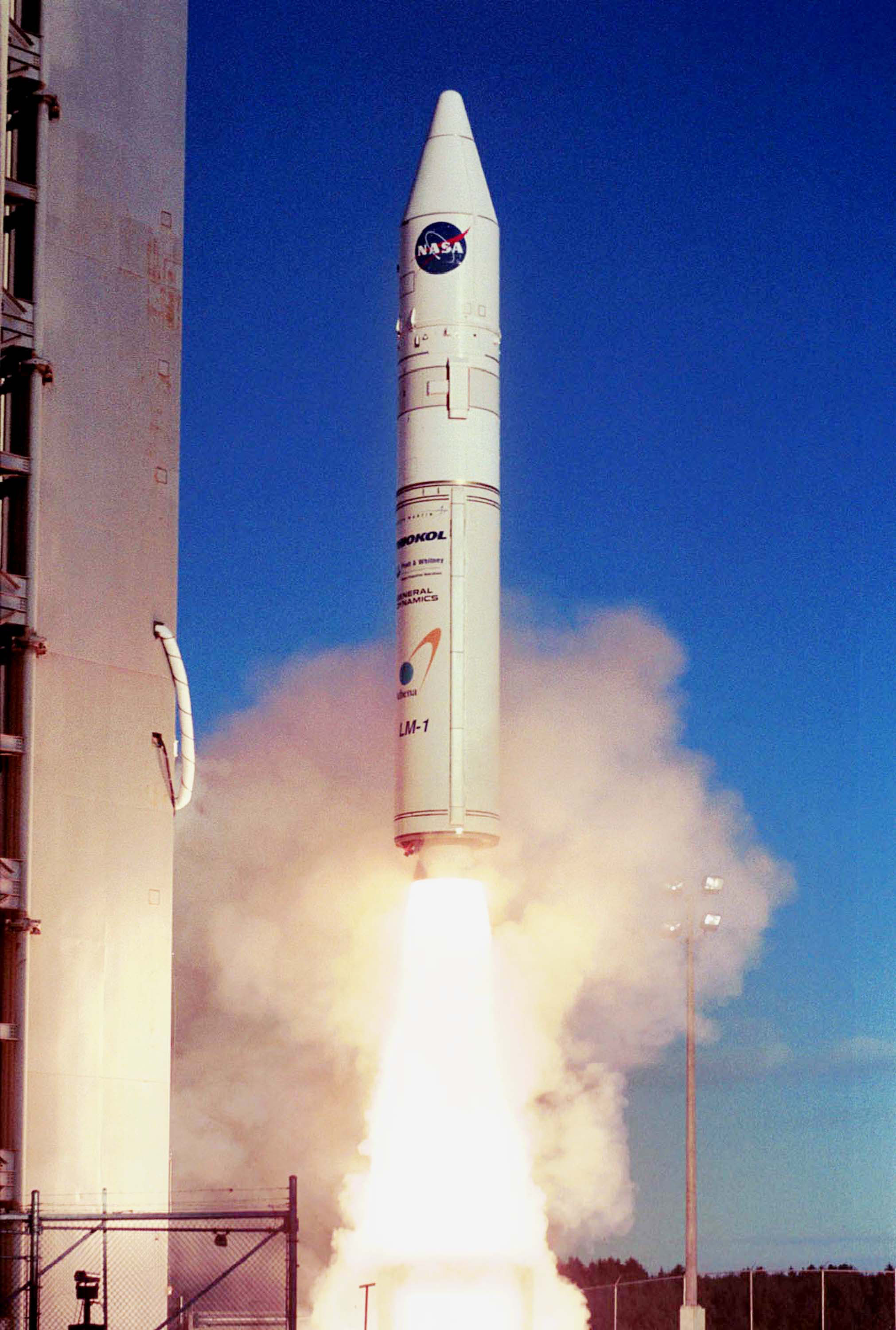
Athena I
In-active AthenaLockheed Martin (LMT)
Aug. 15, 1995
Description
The Athena I, known as the Lockheed Launch Vehicle (LLV) at the time of its first flight and Lockheed Martin Launch Vehicle (LMLV) at the time of its second flight, is an American small expendable launch system which was used for four launches between 1995 and 2001. It is a member of the Athena family of rockets, along with the larger Athena II.
Specifications
-
Stages
3 -
Length
18.9 m -
Diameter
2.36 m -
Fairing Diameter
2.36 m -
Launch Mass
66 T -
Thrust
1900 kN
Family
-
Name
Athena I -
Family
Athena -
Variant
I -
Alias
― -
Full Name
Athena I
Payload Capacity
-
Launch Cost
― -
Low Earth Orbit
820 kg -
Geostationary Transfer
Orbit
― -
Direct Geostationary
― -
Sun-Synchronous Capacity
360 kg
Lockheed Martin
Commercial
None
LMT 1953Lockheed Martin's Space Division started in the production of missiles and later ICBM's in the 1950s. Their TITAN missile system was used for 12 Gemini spacecraft and the Voyager probes. They have worked largely in collaboration with NASA on many of their probes, landers, and spacecraft, and hope to play a key role in NASA's return to the moon in 2024.
Athena I | Starshine-OSCAR-43
Lockheed Martin | USAPacific Spaceport Complex, Alaska, USA
Sept. 30, 2001, 2:40 a.m.
Athena I | Formosat-1
Lockheed Martin | USACape Canaveral, FL, USA
Jan. 27, 1999, 12:34 a.m.
Status: Launch Successful
Mission:
The mission objective of ROCSAT-1 (Republic of China Satellite 1) is to develop, launch, and operate a low earth orbit satellite, and to conduct three scientific and technology experiments in the areas of ocean color imaging, space telecommunication, and solar-terrestrial physics.
Low Earth OrbitAthena I | Lewis
Lockheed Martin | USAVandenberg SFB, CA, USA
Aug. 23, 1997, 6:51 a.m.
Athena I | Gemstar DSS-1
Lockheed Martin | USAVandenberg SFB, CA, USA
Aug. 15, 1995, 10:30 p.m.
Status: Launch Failure
Mission:
The CTA GEMStar 1 (VITASAT 1) satellite partially sponsored by Volunteers In Technical Assistance (VITA) of Arlington Virginia, was launched at 2230 UTC from Vandenberg AFB on the 15-Aug-95, but a second stage failure destroyed the first flight of the Lockheed LLV-1 launch vehicle (later dubbed Athena-1).
Low Earth OrbitFalcon 9
Starlink Group 6-54
Space Launch Complex 40 - Cape Canaveral, FL, USAA batch of 23 satellites for the Starlink mega-constellation - SpaceX's project for space-based Internet communication system.
Falcon 9
Galileo L12 (FOC FM25 & FM27)
Launch Complex 39A - Kennedy Space Center, FL, USATwo satellites for Europe's Galileo navigation system. Originally planned for launch on Soyuz-ST and then Ariane 6 but both were unavailable. Gali…
Long March 2
Shenzhou 18
Launch Area 4 (SLS-1 / 921) - Jiuquan Satellite Launch Center, People's Republic of ChinaSeventh crewed flight to the Chinese space station.
Electron
Beginning Of The Swarm (ACS3 & NeonSat-1)
Rocket Lab Launch Complex 1B - Onenui Station, Mahia Peninsula, New ZealandNASA's Advanced Composite Solar Sail System (ACS3) is a technology demonstration mission tasked with deploying a composite boom solar sail. NeonSa…
Falcon 9
Starlink Group 6-53
Space Launch Complex 40 - Cape Canaveral, FL, USAA batch of 23 satellites for the Starlink mega-constellation - SpaceX's project for space-based Internet communication system.

